Marvin Tokayer (born 1936) is an American rabbi and author who served as a United States Air Force chaplain in Japan. He was later advised by the Lubavitcher Rebbe to return to Japan where he served for eight years as the only rabbi in the country. Tokayer currently serves as a rabbi in Great Neck, New York.
In 1971, Tokayer published a book in Japanese entitled 5,000 Years of Jewish Wisdom: Secrets of The Talmud. The book, written in only three days, was translated into Japanese and sold over a million copies. It was later translated into Korean and has sold over two million copies in South Korea. [1]
South Korean designer Rejina Pyo recalls reading Tokayer's Talmudic tales as a child, saying the stories about kindness, truth, and determination have always stayed with her. [2] Tokayer has written 20 books in Japanese. He has researched the history of the Jews in China and Japan, including the role that the Japanese played in helping victims of the Holocaust. [3] In the book The Fugu Plan published in 1979, Tokayer with co-writer Mary Swartz, wrote the story that how two Japanese officials helped the Jews in Lithuania escape to Japan before World War II. [4]
In the 2010s, he collaborated with Kenneth X. Robbins in editing studies of expatriate communities in Asia. He praises General Hideki Tojo and General Kiichiro Higuchi, who saved 20,000 Jews that the USSR intended to send back to Germany, and is disappointed that this piece of history is not well known. [5] [6]
Tokayer currently serves as a rabbi in Great Neck, New York.
Rabbi Adin Even-Israel Steinsaltz was an Israeli Chabad Chasidic rabbi, teacher, philosopher, social critic, author, translator and publisher.

The Talmud is the central text of Rabbinic Judaism and the primary source of Jewish religious law (halakha) and Jewish theology. Until the advent of modernity, in nearly all Jewish communities, the Talmud was the centerpiece of Jewish cultural life and was foundational to "all Jewish thought and aspirations", serving also as "the guide for the daily life" of Jews.

Rabbinic Judaism, also called Rabbinism, Rabbinicism, or Rabbanite Judaism, has been the mainstream form of Judaism since the 6th century CE, after the codification of the Babylonian Talmud. Rabbinic Judaism has its roots in the Pharisaic school of Second Temple Judaism, and is based on the belief that Moses at Mount Sinai received both the Written Torah and the Oral Torah from God. The Oral Torah, transmitted orally, explains the Written Torah. At first, it was forbidden to write down the Oral Torah, but after the destruction of the Second Temple, it was decided to write it down in the form of the Talmud and other rabbinic texts for the sake of preservation.
Shortly prior to and during World War II, and coinciding with the Second Sino-Japanese War, tens of thousands of Jewish refugees were resettled in the Japanese Empire. The onset of the European war by Nazi Germany involved the lethal mass persecutions and genocide of Jews, later known as the Holocaust, resulting in thousands of Jewish refugees fleeing east. Most ended up in Japanese-occupied China.

Captain Koreshige Inuzuka was the head of the Japanese Imperial Navy's Advisory Bureau on Jewish Affairs from March 1939 until April 1942. Unlike his Imperial Japanese Army counterpart, Colonel Yasue Norihiro, he believed strongly in the Protocols of the Elders of Zion; these beliefs led him to think that attracting Jews to settle in Japanese-controlled Asia was in the Empire of Japan's best interests.
Antisemitism in Japan has developed over the years despite the presence of a relatively small and obscure Jewish population. Japan had no traditional antisemitism until nationalist ideology and propaganda began to spread on the eve of World War II. Before and during the war, Nazi Germany, an ally to the Japanese, encouraged Japan to adopt antisemitic policies. In the post-war period, extremist groups and ideologues have promoted conspiracy theories.
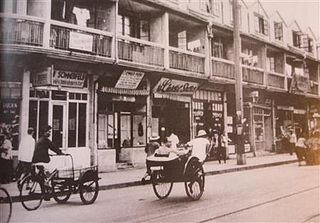
The Shanghai Ghetto, formally known as the Restricted Sector for Stateless Refugees, was an area of approximately one square mile (2.6 km2) in the Hongkou district of Japanese-occupied Shanghai. The area included the community around the Ohel Moshe Synagogue. Shanghai was notable for a long period as the only place in the world that unconditionally offered refuge for Jews escaping from the Nazis. After the Japanese occupied all of Shanghai in 1941, the Japanese army forced about 23,000 of the city's Jewish refugees to be restricted or relocated to the Shanghai Ghetto from 1941 to 1945 by the Proclamation Concerning Restriction of Residence and Business of Stateless Refugees. It was one of the poorest and most crowded areas of the city. Local Jewish families and American Jewish charities aided them with shelter, food, and clothing. The Japanese authorities increasingly stepped up restrictions, surrounded the ghetto with barbed wire, and the local Chinese residents, whose living conditions were often as bad, did not leave. By 21 August 1941, the Japanese government closed Shanghai to Jewish immigration.
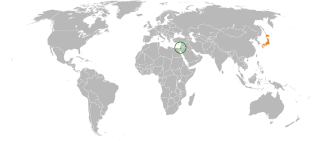
Israeli–Japanese relations began on May 15, 1952, when Japan recognized Israel and an Israeli legation opened in Tokyo. In 1954, Japan's ambassador to Turkey assumed the additional role of minister to Israel. In 1955, a Japanese legation with a Minister Plenipotentiary opened in Tel Aviv. In 1963, relations were upgraded to Embassy level and have remained on that level since then.
There were several proposals for a Jewish state in the course of Jewish history between the destruction of ancient Israel and the founding of the modern State of Israel. While some of those have come into existence, others were never implemented. The Jewish national homeland usually refers to the State of Israel or the Land of Israel, depending on political and religious beliefs. Jews and their supporters, as well as their detractors and anti-Semites have put forth plans for Jewish states.
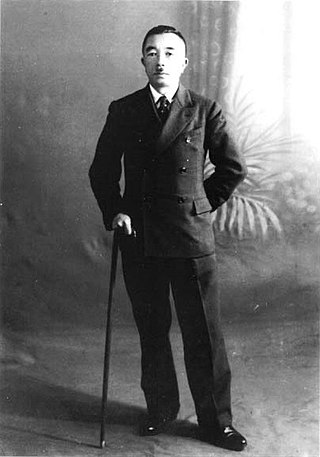
Norihiro Yasue was an Imperial Japanese Army colonel who played a crucial role in the so-called Fugu Plan, in which Jews were rescued from Europe and brought to Japanese-occupied territories during World War II. He was known as one of Japan's "Jewish experts", along with Captain Koreshige Inuzuka.

The Mirrer Yeshiva Central Institute, commonly known as the Mir Yeshiva or the Mirrer Yeshiva, is a Haredi yeshiva located in Brooklyn, New York.
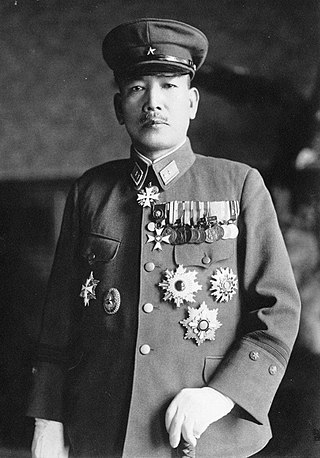
Kiichirō Higuchi was a lieutenant general in the Imperial Japanese Army in World War II.
Simon Kaspé (1909–1933) was a Russian Jewish resident of Harbin, Manchuria who was kidnapped, ransomed, tortured, and murdered by a gang of fascist criminals under the influence of exiled White Russian leader Konstantin Rodzaevsky. The halfhearted investigation into his disappearance and death by the Japanese authorities, who were courting the White Russian community as local enforcers and fomenting their anticommunism, sparked anti-Japanese sentiment among the Jewish community of Manchukuo and the flight of nearly 70% of the Jews of Harbin.
Abraham Josevich Kaufman was a Russian-born medical doctor, community organizer and Zionist who helped protect some tens of thousands of Jews seeking safe-haven in East Asia from Nazi atrocities during World War II.
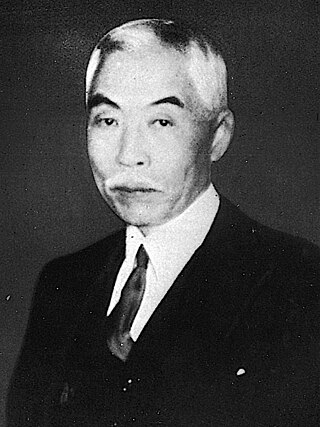
Ikeda Shigeaki , also known as Seihin Ikeda, was a politician, cabinet minister and businessman in the Empire of Japan, prominent in the early decades of the 20th century. He served as director of Mitsui Bank from 1909-1933, was appointed governor of the Bank of Japan in 1937, and served as Minister of Finance under Prime Minister Fumimaro Konoe from 1937 to 1939. In 1941, he was made a member of the Imperial Privy Council; following Japan's defeat in World War II, Ikeda was banned from public political service.

Josef Albert Meisinger, also known as the "Butcher of Warsaw", was an SS functionary in Nazi Germany. He held a position in the Gestapo and was a member of the Nazi Party. During the early phases of World War II Meisinger served as commander of Einsatzgruppe IV in Poland. From 1941 to 1945 he worked as liaison for the Gestapo at the German embassy in Tokyo. He was arrested in Japan in 1945, convicted of war crimes and was executed in Warsaw, Poland.

The history of the Jews in Japan is well documented in modern times, with various traditions relating to much earlier eras.
The history of the Jews in Curaçao can be traced back to the mid-17th century, when the first Jewish immigrants began to arrive. The first Jews in Curaçao were Sephardi Jewish immigrants from the Netherlands, Portugal, and Spain. These immigrants founded Congregation Mikvé Israel-Emanuel, the oldest continuously used synagogue in the Americas. The first Jew to settle in Curaçao was a Dutch-Jewish interpreter named Samuel Cohen, who arrived on board a Dutch fleet in 1634. By the mid-1700s, the community was the most prosperous in the Americas and many of the Jewish communities in Latin America, primarily in Colombia and Venezuela, resulted from the influx of Curaçaoan Jews.
Kenneth X. Robbins is a psychiatrist, collector of south Asian art, and author known for his studies of expatriate communities in Asia. In 1990, Robbins donated a collection of materials relating to India to the Smithsonian Institution. He received his B.A. from Columbia University in 1963 and M.D. from the New York University School of Medicine.
Although Japan was a member of the Axis, and therefore an ally of Nazi Germany, it did not actively participate in the Holocaust. Anti-semitic attitudes were insignificant in Japan during World War II and there was little interest in the Jewish question, which was seen as a European issue. Furthermore, Nazi Germany did not pressure Japan on the issue.